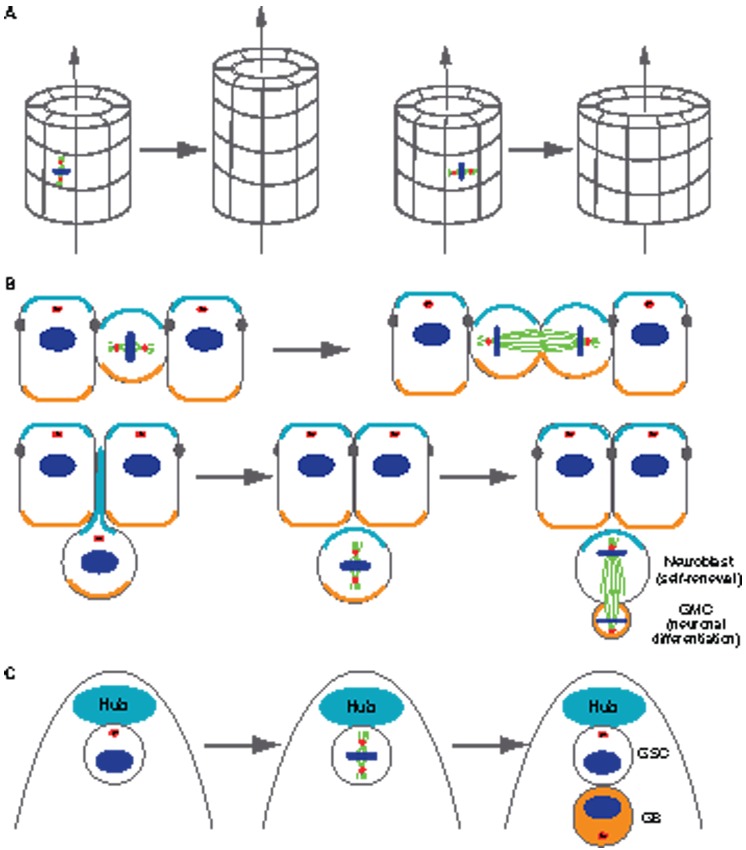Fig. 3.
Spindle orientation mediated by centrosome–cortex interactions has functional roles and effects on tubular morphogenesis (A) and specification of cell fate (B and C). (A) Mitotic spindle orientation with respect to the longitudinal axis of an epithelial tube has a major effect on its shape. When the spindle orientation is parallel to the longitudinal axis of the tube (shown on the left), this cell division only increases tube length but not the circumference. By contrast, when the spindle orientation is perpendicular to the longitudinal axis of the tube (shown on the right), the cell division only increases tube circumference but not the length. (B) Intrinsic asymmetrically localized cortical cues (represented by the orange and turquoise coloring) determine the different fates of daughter cells in neuroblasts. Symmetrical divisions (top row), in which the mitotic spindles are perpendicular to the apical–basal axis, generate two identical daughter cells that inherit both apical and basal cortical cues. Asymmetric cell divisions (bottom row), in which mitotic spindles are parallel to the apical–basal axis, generate two daughter cells that inherit either apical or basal cortical cues. One daughter cell self-renews to maintain the pool of neuroblasts, whereas the other differentiates to populate the central nervous system. (C) Extrinsic polarity cues determine the different fates of daughter cells in the Drosophila male germline stem cell (GSC). During cell division, the mitotic spindle forms perpendicular to the interface with the stem cell niche (Hub), such that one daughter cell retains contact with the niche and its sustaining signals, whereas the other daughter cell loses contact with the niche and initiates differentiation (gonialblast, shown in orange). GMC, ganglion mother cell; GB, gonialblast.

